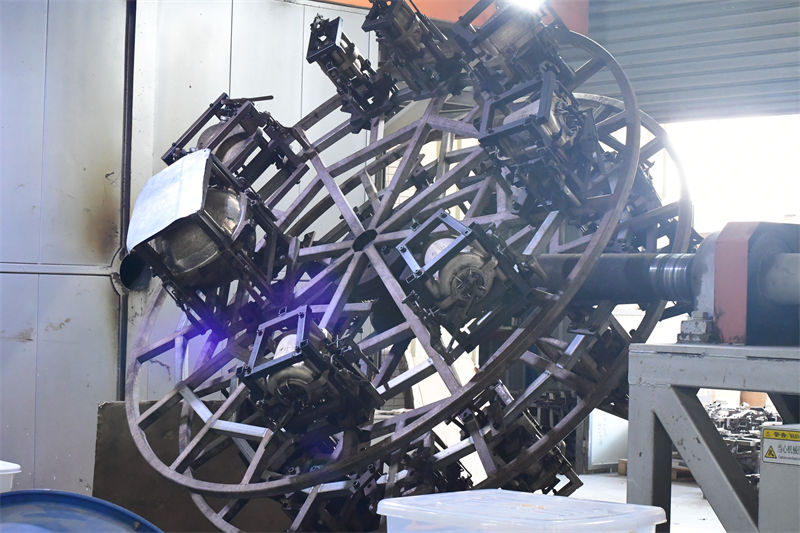How To Control Air Flow in Rotomolding Process?
 Jan 31,2024
Jan 31,2024

How To Control Air Flow in Rotomolding Process?
One critical aspect of the rotomolding process is to controlling the air flow within the oven. Proper air flow management is essential for achieving uniform heating, preventing deformation, and ensuring the quality of the final product. Following are some general guidelines on how to achieve optimal air flow control.

1. Importance of Air Flow Control
Air flow plays a crucial role in the rotational molding process as it affects the heating and cooling of the plastic material. Proper air flow ensures uniform distribution of heat, leading to consistent melting and curing of the plastic. Inadequate air flow can result in uneven heating, causing variations in wall thickness, warping, or even incomplete melting of the plastic. Therefore, controlling air flow is essential for achieving high-quality rotomolded products.
2. Oven Design and Air Flow Patterns
The design of the oven significantly influences air flow patterns within the rotomolding process. Ovens should be designed to facilitate the efficient movement of air, ensuring uniform heating of the mold. Consider factors such as oven size, placement of heating elements, and the arrangement of fans or blowers. Properly positioned fans or blowers can help create a consistent air flow pattern, preventing hotspots or dead zones within the oven.
3. Adjusting Fan Speed and Direction
Controlling air flow involves adjusting the speed and direction of fans or blowers within the oven. The fan speed can be regulated to achieve the desired air flow rate, ensuring optimal heat distribution. Additionally, the direction of air flow can be manipulated to target specific areas of the mold, addressing any potential heating inconsistencies. Regularly monitoring and adjusting fan settings are essential for maintaining consistent air flow throughout the rotomolding process.
4. Using Air Flow Ducts and Diverters
To enhance air flow control, consider incorporating air flow ducts and diverters within the oven. These components can help direct and concentrate air flow to specific areas of the mold, promoting uniform heating. Ducts can be strategically placed to target thicker or more complex sections of the mold, ensuring complete melting and curing of the plastic material.
5. Monitoring and Calibration
Regular monitoring and calibration of the oven's air flow system are essential for maintaining optimal performance. Utilize temperature sensors and thermal imaging techniques to assess the effectiveness of air flow distribution. Adjustments should be made based on the observed heating patterns to ensure consistent and uniform air flow throughout the rotomolding process.
As a professional custom rotomolding factory, Light Venus uses the most up-to-date equipment available to ensure that these process controls are being adjusted to deliver high-quality rotomolded products to each customer.
 Tel: 0086-13632687993
Tel: 0086-13632687993  Email: roto@lightvenus.com
Email: roto@lightvenus.com

 Home
Home How to Test the Surface Hardness in Rotational Molding Process?
How to Test the Surface Hardness in Rotational Molding Process?  You May Also Like
You May Also Like



 Tel
Tel
 Email
Email
 Address
Address








